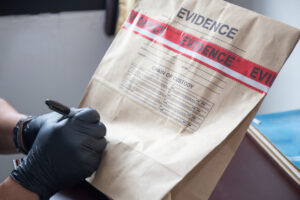
You need proof to win a personal injury claim. ‘Proof’ is made of evidence in the way that a house is made of bricks. To win your claim, you (or, preferably, your lawyer) will need to understand how to gather, screen, and organize evidence.
The Burden of Proof
In any personal injury case, the party that makes a claim is the one who bears the burden of proving it. The plaintiff (victim), for example, must prove that the defendant is liable for their personal injury. A defendant will generally respond that the plaintiff’s evidence is not enough to prove liability.
Sometimes, however, a defendant raises an affirmative defense, such as comparative fault (asserting that you were partly to blame for your own injuries) or expiration of the statute of limitations deadline to file a lawsuit. Essentially, the defendant is saying, “Even if everything the plaintiff is saying is true, I should still win because of [insert affirmative defense here]“.
If this happens, the defendant bears the burden of proving their affirmative defense. However, they still don’t have the burden of proving that they are not liable for the plaintiff’s claim.
Some affirmative defenses partially relieve the defendant from liability, while others offer complete relief ($0 liability).
Standard of Proof
Most of the time, the standard of proof (how much evidence you need to win) is ‘a preponderance of the evidence.’ That generally means enough evidence to prove your claim with at least 51% certainty.
If you are claiming punitive damages, however, the standard of proof is higher. You must prove your claim by “clear and convincing evidence.” This standard is considerably higher (more difficult to prove) than “a preponderance of the evidence.” It is also considerably lower than the ‘beyond a reasonable doubt’ standard that courts use for criminal trials.
Motions in Limine
The Tennessee Rules of Evidence determine which evidence is admissible in court and which evidence is inadmissible. Either side can file a motion in limine that asks the judge to rule on the admissibility of evidence that the other side submitted. Sometimes, a court will exclude evidence from a trial.
Examples of Evidence
Here are some of the most common forms of evidence that parties to a personal injury case like to use:
- Medical records to prove the nature and severity of your injury
- Medical bills to determine the amount of medical expenses to claim
- Employment records to calculate lost earnings.
- Accident reports to establish the facts of the accident
- A pain journal to establish your non-economic damages, such as pain and suffering, and to prove how your injuries affect your everyday life
- Witness statements, especially from people unrelated to you
- Expert witness statements from an expert in a related field (a medical expert, for example)
- Photographs, such as a photograph showing the angle of cars on the road immediately after an accident
- CCTV surveillance footage of the accident
- Maintenance and inspection records to determine fault for the accident
- Correspondence and communication related to your claim
- Insurance documentation to determine the extent of your coverage
An experienced personal injury lawyer will gather and analyze available evidence to strengthen your claim.
Excluded Evidence
Tennessee excludes certain kinds of evidence from court, including:
- Evidence of subsequent remedial measures. If the defendant repairs a dangerous condition, you cannot use the fact of the repair to prove that the condition was dangerous to begin with. The purpose of this rule is to avoid discouraging people from repairing dangerous conditions.
- Hearsay or statements made out of court. Hearsay is inadmissible unless an exception applies—but the Tennessee Rules of Evidence lists 28 specific exceptions. Some of these exceptions are vaguely worded.
- Irrelevant evidence, for obvious reasons. A sexual assault victim’s prior sexual history, for example, is typically irrelevant.
- Offers to settle. In other words, offering to settle is no evidence that the defendant is liable. The amount of a settlement offer is no evidence of the true value of the plaintiff’s claim.
- Character evidence. You cannot use this evidence to prove that the defendant acted consistently with their ‘character’ on the occasion in question.
- Evidence of prior conduct. This includes accidents or personal injury claims.
- Speculative testimony. Even an expert witness cannot offer purely speculative testimony.
- Privileged communications. Attorney-client communications are typically excluded from evidence, for example.
- Results of polygraph. Lie detector tests which are typically not admissible due to concerns about reliability.
There are many more grounds for excluding evidence.
The Use of Evidence in Settlement Negotiations
It’s possible to use evidence that would never make it to court as bargaining leverage in settlement negotiations. The classic example is a police report issued after a car accident. Courts usually exclude this evidence as hearsay. In court, however, you could indeed call the police officer who wrote the report to the witness stand and question them. A police report is useful in settlement negotiations because it tells both sides how the officer will probably testify.
A Tennessee Personal Injury Lawyer Can Help You Gather Persuasive Evidence
The law of evidence is complex and confusing–and the defendant will be challenging you at every turn. With an experienced personal injury lawyer, however, you can build your case out of solid evidence and, hopefully, walk away a winner. The best part is that under the contingency fee system that most personal injury lawyers use, you won’t owe a dime in legal fees unless you win your case.
For more information, please contact the Nashville personal injury law firm of Labrum Law Firm Personal Injury Lawyers to schedule a free consultation today of call at (615) 265-0000.


